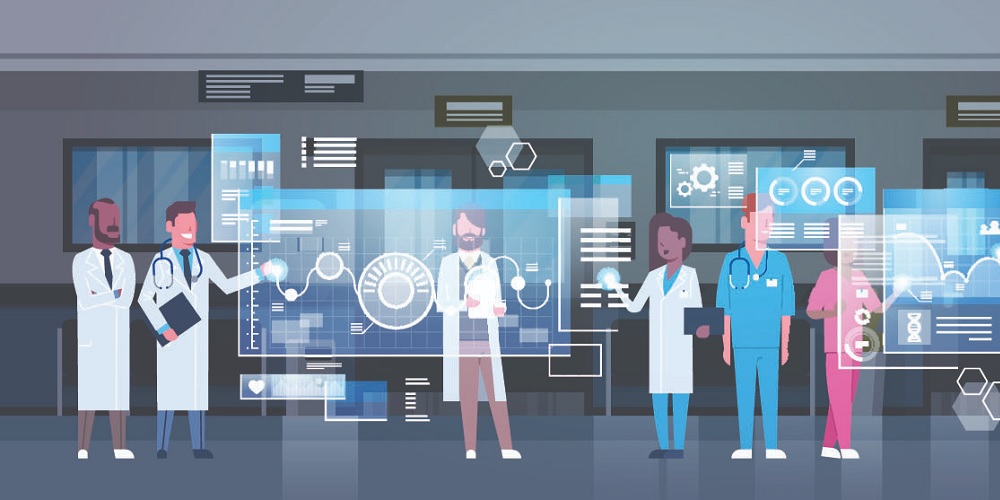How to Address Challenges of Driving Innovative Healthcare Technology

Today’s modern healthcare landscape highly depends on technology to deliver excellent patient care. From accessing historical medical information to facilitating communication among multiple healthcare stakeholders, technology has generally enabled a more robust and interconnected healthcare experience. However, driving innovation is not without its challenges, as the complexity of healthcare, from the number of people involved to the complex needs of individual patients, makes it difficult to easily develop streamlined technologies. As a result, healthcare tends to be one of the slowest industries to adopt new technology.
When thinking about innovative healthcare, one must consider the limited resources, technical complexity, and resistance to change among healthcare stakeholders that can hinder the innovation process.
Challenges faced in driving innovation in healthcare technology
Whether it’s the time of a healthcare regulatory expert or the skills of a software developer, resources to drive healthcare innovation, such as time and money, are limited. Numerous healthcare organizations are operating on thin margins due to various costs, such as staffing, and they may be limited in terms of the financial resources that they possess to drive innovative healthcare solutions. Nevertheless, expenses related to healthcare IT are high.
For example, cybersecurity can be expensive due to compliance rules and the extra precautions that need to be maintained to minimize the risk of patient data breaches. Maintaining current healthcare technology systems can also be costly due to their complexity. As a result, organizations need help with how to appropriately allocate time and financial capital to best innovate their healthcare technology. However, they should understand that they are not alone in their desire to deliver excellent outcomes in a timely and cost-efficient manner and should learn from the experiences, successes, and failures of others to best determine how to distribute their limited resources.
The technical complexity of medical-level software and hardware also impedes healthcare technology innovation. A significant contributor to this is the scientific and computational expertise (e.g., a technology’s back-end) that goes into an extremely advanced technology, but the usability of the technology (front-end) must be designed in a way that is simple enough for all users to understand and use effectively. A great example of this is a magnetic resonance imaging (MRI) device. It is quite difficult to understand how to enhance image processing software because an MRI’s mechanism of imaging is already quite complex, but radiographic technicians still need to be able to operate the device.
Whether it be applications of electronic medical records or implantable medical hardware, the sophistication of healthcare technology is advanced enough that it can be challenging to develop technology in an easy-to-use manner at a medically useful level. Moreover, integrating these complex technologies with existing ones, such as transferring collected data from a device to an electronic medical record, can pose communication and security challenges. Subsequently, it may be difficult for an innovative healthcare organization to have the wide-ranging expertise needed to successfully consider and develop technology that is usable and integrable into an existing consumer’s ecosystem.
Finally, resistance to change can be a barrier to adopting new technology. It can be challenging to make a system easy to use. Once a user learns one thing, there may be resistance to learn something new due to the time and financial resources necessary to acquire a new skill set. According to the five segments of customer technology adoption, most people in the healthcare industry are laggard adopters. Innovative healthcare organizations must develop a strategy to overcome this barrier.
Augmenting your team for innovation in healthcare technology
To overcome these wide-ranging challenges, healthcare organizations can consider augmenting their teams. Augmentation can bring new perspectives and leverage the experience of experts from other organizations to develop and adopt new technology more quickly and cost-effectively. For example, they can get regulatory compliance expertise or a technological understanding of how current target customers’ technologies operate. Approaches to augmenting one’s team include hiring external experts, collaborating with other healthcare organizations, and participating in open innovation efforts, such as healthcare hackathons, to foster new ideas and solutions.
Many healthcare organizations have successfully augmented their teams for innovation. Mayo Clinic and Philips Healthcare, for instance, regularly collaborate with consultants, local universities, and other healthcare providers to develop new technology. Examples of these innovations include augmented surgical visualization for Mayo Clinic and incorporating decision-analytic modeling in Philips Healthcare.
Conclusion
Innovation in healthcare technology can advance how organizations and society deliver patient care and excellent patient outcomes, but it comes with challenges, like limited resources, technical complexity, and resistance to change. However, augmenting teams can bring valuable benefits in terms of new perspectives, the leveraging of networks and previous experiences, and collaboration to solve problems more efficiently. Healthcare organizations can explore various ways to augment their teams and foster innovation in healthcare technology.
So, to drive innovation in healthcare technology and enhance patient outcomes, it is essential to be aware of these challenges and consider augmenting your team for success. A great team can help you effectively allocate your limited resources to bring your innovation to healthcare customers and patients sooner. Ultimately, everyone wants to be healthier and have access to great healthcare, so develop your team to help make this happen.
Here at OtterSoft, we help healthcare technology providers drive innovation and integrate smoothly with legacy systems to keep things in motion, address the challenges of healthcare innovation, and seamlessly sync information. To see how we can help you overcome the challenges of healthcare innovation, contact us today!

